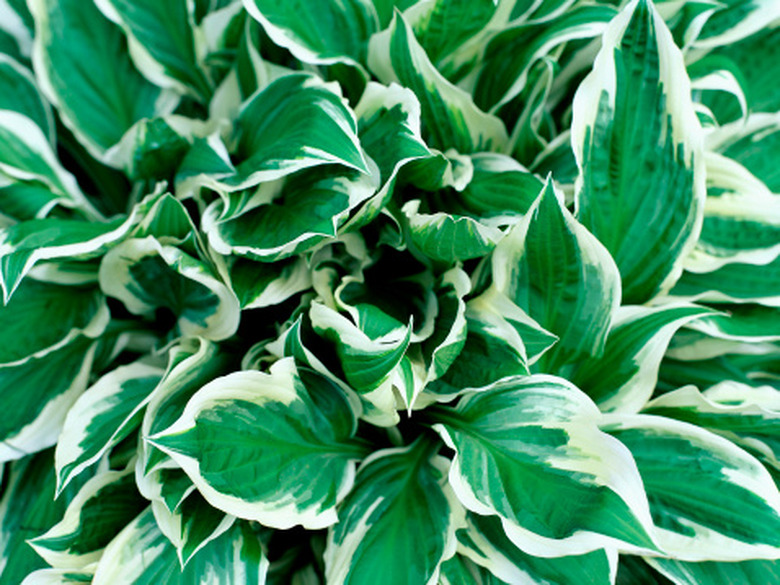How To Grow Hosta Under Pine Trees
We may receive a commission on purchases made from links.
Hostas (Hosta spp.) are cold-hardy, shade-loving perennials that grow in shade gardens across U.S. Department of Agriculture plant hardiness zones 3 through 9, depending on the species and cultivar. To grow hostas under pine trees (Pinus spp., zones 2-9, depending on species), you must pay careful attention to the planting and growing conditions. Still, with care and patience, you can successfully fill the shade under your pine tree with lush yellow-green to blue-green solid or variegated leaves for a bright splash of color and texture.
Issues When Planting Under Pines
Issues When Planting Under Pines
When grown under pine trees, any ground cover may struggle. Pine trees have shallow, vigorous root systems that compete with the hostas for water and nutrients. In addition, the pine tree canopy blocks rain and sunshine. Usually, when planting a ground cover, you amend and cultivate the soil, but when planting under trees, caution is required to avoid damaging the roots.
Pine trees, while evergreen, also drop a lot of needles. A heavy layer of pine needles can smother anything planted under the tree. A common misconception is that pine needles make soil acidic. However, research has shown that as the needles decompose, their pH drops into the neutral range, making them suitable for use as mulch.
Hosta Species and Cultivars
Hosta Species and Cultivars
With more than 40 species and over 2,000 named cultivars, there's a hosta for every shady garden, from partial to dappled to full shade under pines, conifers and deciduous shade trees. Generally, hostas enjoy two or three hours of morning sun, which brings out the leaf colors, and then light or dappled shade for the rest of the day.
Hosta plantaginea is regarded as the most sun-tolerant hosta species, thriving in full to partial sun in many areas, although there are also many sun-tolerant hybrid cultivars available. The foliage and fragrant, trumpet-shaped flowers of hostas won't disappoint. Flower colors range from white to lavender to purplish and even purple-and-white striped blooms. Some large hosta clumps can reach sizes exceeding 6 feet in diameter.
Many of the miniature or dwarf hostas have been hybridized from Hosta gracillima. This native of Japan grows in 5-inch-tall by 12-inch-wide clumps of dark-green leaves with pale undersides. The lavender-blue and purple striped flowers are funnel shaped. It prefers partial to full shade but can tolerate a little sun.
Grow Hostas Under Pine Trees
Grow Hostas Under Pine Trees
To ensure success without damaging the pine tree's roots, select hostas in small pots or bare-root plants. Begin at least 12 inches from the pine tree's trunk. Dig a small hole with a trowel that is just large enough for the hosta roots or root ball. If you start to dig and find a large pine tree root, move over the hole 6 to 12 inches to avoid damaging the bark. You may find tiny feeder roots as you dig a planting hole; these roots will quickly regrow and recover.
Insert the hosta into the planting hole and backfill so the plant is at the same level as it was in the pot. Bare-root plants should be set with the roots just below the soil level and the growing tip exposed. Water thoroughly and add more soil as needed to fill in the hole. Space additional plants according to their mature size.
Add a 2-inch layer of mulch or rake the pine needles around the newly planted hostas. Monitor the soil moisture around the hostas since the plants are competing with the pine tree roots for water. A drip-irrigation system is ideal; it allows you to put water directly on the hosta root ball without overwatering the tree. Wait until spring to fertilize the hostas with a balanced 10-10-10 slow-release fertilizer.
